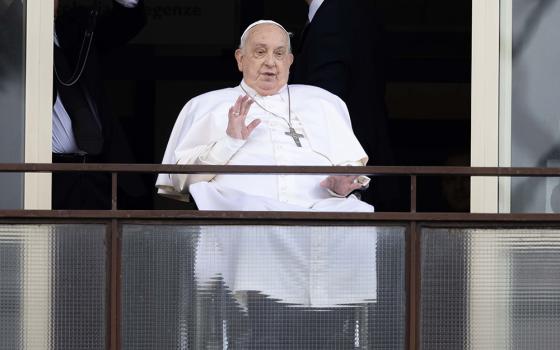Matthew’s situation reminds me of the current argument between those who believe we must hold to the “original intent” of the U.S. Constitution and those who argue all such documents are living texts, always to be adapted to present needs. For generations, while Jews and Jewish Christians shared worship and ritual in the synagogues, there was understandable tension between the old and the new. In the scribal tradition -- Matthew’s tradition -- new insights did not replace or negate the old; they expanded it. Matthew was trying to understand the meaning of Jesus against the backdrop of both men’s Jewish heritage and trying to adapt that heritage to new developments in salvation history. Matthew’s gospel is a Jewish rather than a Christian book.
|
So who appears with the Transfigured Jesus? Moses and Elijah, of course, for in Jewish thought, neither man had died natural deaths. Both were taken up bodily into God’s presence -- Elijah arriving in a fiery chariot. Jesus now joins this group -- expanding the tradition -- having conquered death himself. And, of course, God’s translucent light shined on him, just as it had on so many of his ancestors leading the Hebrew people from their many forms of enslavement and into freedom.
[ This reflection is from Coming to Consciousness: Reflections for Lent 2011 by Angie O'Gorman and is based on the lectionary readings for each day of Lent. Coming to Consciousness is a publication of Pax Christi USA and is reprinted here by permission of the author and Pax Christi USA.
This reflection is from Coming to Consciousness: Reflections for Lent 2011 by Angie O'Gorman and is based on the lectionary readings for each day of Lent. Coming to Consciousness is a publication of Pax Christi USA and is reprinted here by permission of the author and Pax Christi USA.
The full booklet has reflections for every day of Lent. You can order copies here: Coming to Consciousness: Reflections for Lent 2011. Bulk discounts are available.]
About the Author
Angie O’Gorman’s essays have been published in America magazine, National Catholic Reporter, and Commonweal. She has been involved in human rights work and nonviolent conflict resolution in the United States, Central America, and the West Bank. Her novel, The Book of Sins, was published last January.
About Pax Christi USA
In a world that settles differences by armed violence and defines “justice” as “revenge,” Pax Christi USA dares to break the cycle of violence by fostering reconciliation. Pax Christi USA is the national Catholic peace movement. Our membership includes more than 130 U.S. bishops, 800 parish sponsors, 650 religious communities, 75 high school and college campus groups, 300 local groups, and tens of thousands of individual members. The work of Pax Christi USA begins in personal life and extends to communities of reflection and action to transform structures of society. Pax Christi USA rejects war and every form of violence and domination.




